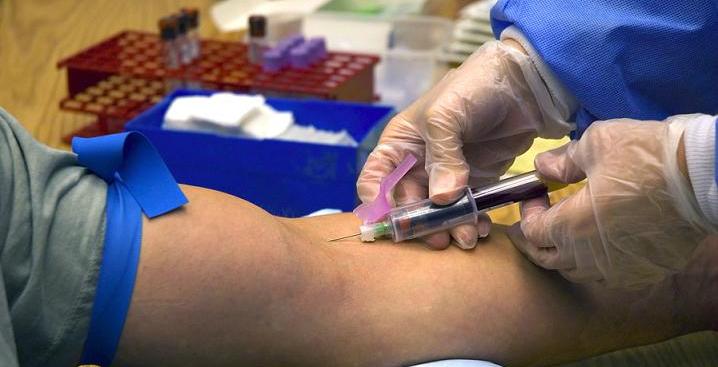How Long Is the Phlebotomy Program? Yoru Complete Guide to Training Duration and What to expect
If you’re considering a career in healthcare,becoming a certified phlebotomist can be a great choice.Not only is it a rewarding profession, but it also offers a relatively quick pathway into the medical field. But one of the most common questions aspiring phlebotomists ask is: how long is the phlebotomy program? In this complete guide, we’ll explore the typical training duration, course details, benefits, and practical tips to help you make an informed decision about your journey into phlebotomy.
Understanding Phlebotomy Training Programs
Phlebotomy training programs are designed to teach students the skills necessary to draw blood safely and efficiently for laboratory tests, blood donations, and other medical needs. The duration of these programs can vary based on several factors including program type, institution, and your prior healthcare experience.
Types of Phlebotomy Training Programs
- Certificate or diploma programs: Generally focused on quick training for entry-level positions.
- Associate degree programs: Combine broader medical education wiht phlebotomy training, usually offered at community colleges.
- Continuing education courses: For those already in healthcare seeking to specialize or update skills.
How long Is the typical Phlebotomy Program?
The training duration for a phlebotomy program varies depending on the type and intensity of the program. Here’s a breakdown of common options:
Certificate or Diploma Programs
Most popular among aspiring phlebotomists, these programs typically last:
| Program Type | Duration | Format |
|---|---|---|
| Fast-track Certificate | 1 to 4 weeks | Intensive, full-time |
| standard Certificate | 4 to 8 weeks | Part-time or evening classes |
| Hybrid Programs | 6 to 12 weeks | Combination of online and in-person training |
Associate degree Programs
These are more comprehensive and usually include general education courses:
- Duration: Typically 2 years
- This is ideal for students considering further healthcare education or advancing their careers.
What Does Phlebotomy Training Usually Cover?
A typical phlebotomy training program includes:
- Anatomy and physiology relevant to blood collection
- Venipuncture techniques
- Safety and infection control
- Patient communication skills
- Labeling and handling specimens
- Legal and ethical considerations
practical Experience and Clinical Training
Along with classroom learning,hands-on clinical training is essential. most programs require students to complete:
- 25-50 supervised blood collections
- Internships or externships at healthcare facilities
This practical experience typically lasts from 1 to 4 weeks, depending on the program structure and clinical site availability.
Benefits of Enrolling in a Phlebotomy Program
Choosing to enroll in a certified phlebotomy program offers numerous advantages:
- Fast entry into the healthcare field: Programs often require only a few weeks to complete, allowing you to start working sooner.
- High demand for phlebotomists: Growing healthcare needs make this a stable career option.
- Specialized skill set: develop practical skills applicable in hospitals, clinics, blood donation centers, and laboratories.
- Potential for career advancement: Opportunities to specialize further or pursue healthcare certifications.
Practical Tips for Aspiring Phlebotomists
- Research accredited programs: Ensure the program is approved by relevant health authorities and offers certification.
- Gain hands-on experience: Prioritize programs with clinical practicums for real-world skills.
- Prepare for certification exams: Most states require certification, so study accordingly.
- Develop soft skills: Patience, empathy, and communication are key in patient interactions.
Case Studies: Success Stories in Phlebotomy
Many students have found success and satisfaction after completing their phlebotomy training:
Case Study 1: Quick Entry with Certificate Program
Jane enrolled in a 2-week intensive certificate program and landed her first job as a phlebotomist within a month. Her commitment and training paid off, and she now works in a busy hospital.
Case Study 2: Career Advancement with Associate Degree
michael started with a phlebotomy certificate, then pursued an associate degree, opening doors to supervisory roles and further healthcare education.
First-Hand Experience: What to Expect During Your Training
Many students report that hands-on practice is the most critical part of training. Expect to:
- Learn venipuncture and capillary techniques
- get comfortable with drawing blood from diverse patient populations
- Handle specimens properly and maintain safety protocols
- Develop confidence in your patient communication skills
Conclusion
If you’re wondering how long is the phlebotomy program, the answer depends on the type of program you choose.Certificate programs, which are ideal for quick entry into the healthcare workforce, typically take from 1 to 8 weeks. More comprehensive associate degree programs last about two years but offer broader medical training and career options.
Across all types, practical experience through clinical training is a vital component. With the growing demand for healthcare professionals, becoming a certified phlebotomist can be a rewarding and accessible path into the medical field. Whether you’re looking for a fast-track to employment or a foundation for further healthcare studies, understanding the training duration and expectations helps you plan your career effectively.
Take the first step today-research accredited programs near you, prepare for your certification exam, and start your journey into this vital healthcare profession!
